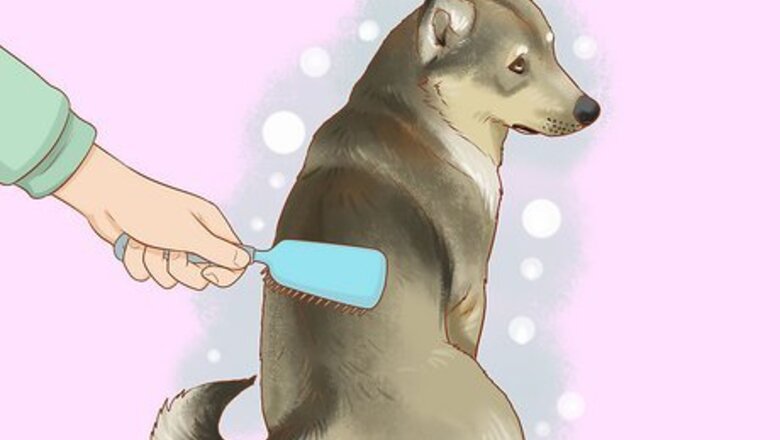
views
X
Trustworthy Source
American Society for the Prevention of Cruelty to Animals
Leading organization dedicated to the prevention of animal cruelty
Go to source
Keep reading for a complete list of ways, from special brushes to changes in your dog's diet.
Brush your dog at least once a week.
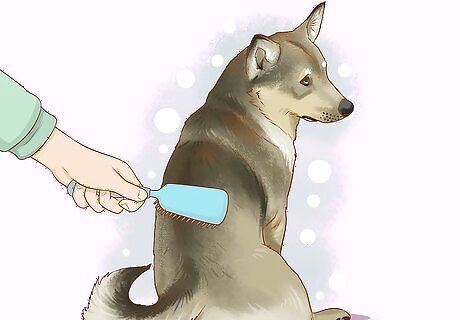
Use a bristle brush to remove dead hairs and prevent shedding. A bristle brush meant for dogs is all you need to limit shedding in dogs with short, smooth coats (like Chihuahuas, Dobermans, and Greyhounds). Brush your dog's hair in the direction of their hair growth. As you brush, the bristles will pick up any dead or loose hairs. Some advise brushing against the direction of your dog's hair growth to get rid of more dead hairs, but this can be uncomfortable for your dog. If you don't have the time or the expertise to brush and maintain your dog's coat, take him to a professional groomer on a weekly or biweekly schedule.
Invest in a deshedding tool for thick coats.
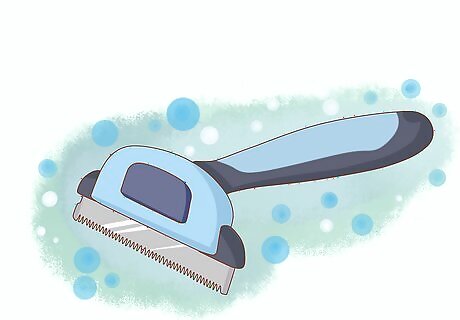
This extra powerful tool removes dead hairs in the undercoat. If your short-haired dog has a double coat (Corgis and Shiba Inus, for example), opt for a more potent brushing tool to tackle their shedding problem. Brushing with a deshedding tool once a week will be perfect. Brush your dog in the direction of their hair growth, pulling the tool upwards as you complete each stroke. Over brushing with a deshedding tool can irritate your pup's skin, so once a week is plenty.
Remove dead hairs with a grooming glove.
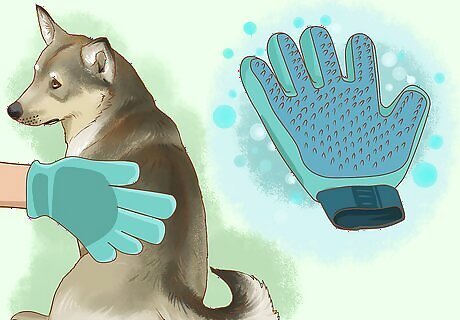
Opt for a grooming glove if regular brushes make your dog nervous. A grooming glove has soft teeth that grab hold of dead hairs without irritating an anxious dog. To use it properly, massage your dog's fur in a circular motion while wearing the glove. Then, brush your dog with the glove by petting their fur in the direction of their hair growth. If your dog has been shedding a lot lately, try repeating the process 2-3 times in a row.
Bathe your dog every 4-8 weeks.
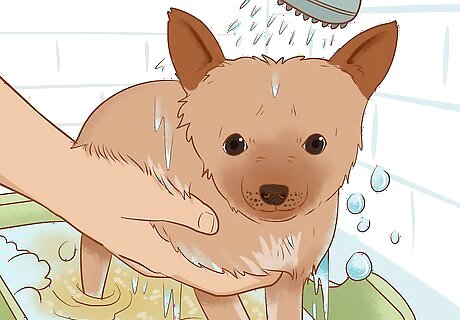
Bathing your pup can remove dead hairs before they shed. To bathe your dog, place or guide your pup into the bathtub and fill it with warm (not hot) water until it reaches their tummy. Then, wet your dog's fur, apply a small amount of deshedding shampoo to your hands, and massage it into their fur to lather the shampoo. Apply warm water to your dog's coat to rinse off the shampoo. Be sure to avoid applying shampoo to your dog's face, nose, mouth, and ears. To determine the exact amount of shampoo to use, follow the directions on your shampoo bottle. Though not required, you might try a deshedding conditioner after shampooing your dog.
Wipe down your pup with dog wipes.
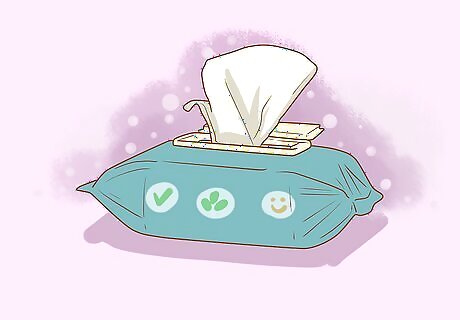
Use dog wipes to get rid of dead hairs in between baths. Dog wipes come in many varieties, and many scent-free, hypoallergenic options are available to avoid irritating your pup's skin. Simply wipe down their fur with one of the wipes to clean off any loose hairs that they're about to shed. If you'd rather save a trip to the pet store, use a damp washcloth to wipe down your dog.
Feed your dog a nutritious diet.
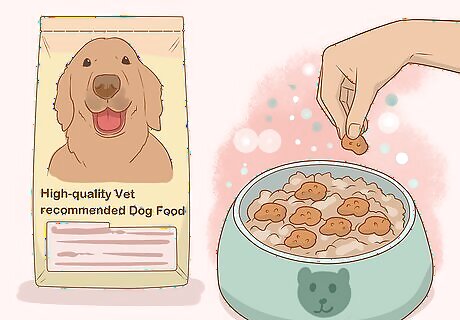
Well-balanced, vitamin-rich food keeps your dog's coat healthy. If your dog has been shedding a lot, consider trying out a different brand of food. When choosing a healthy dog food, talk to your veterinarian for advice on what might be the best brand and type for your pup's age, size, and breed. For a well-balanced diet that gives them a shiny, healthy coat (that won't shed as much), dogs need a good mix of protein, healthy fats, and vitamins. Healthy protein ingredients include chicken, turkey, lamb, and fish. For a good source of vitamins and healthy fats, try cooking chicken livers for your dog as an occasional treat.
Keep your pup hydrated.
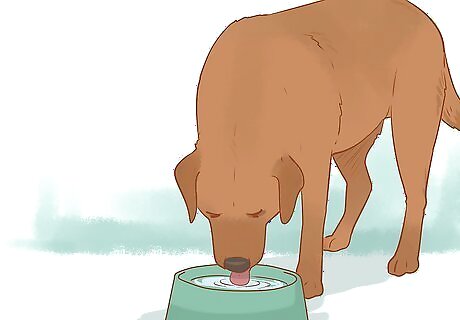
Dehydration can cause skin issues and lead to shedding. By making sure your dog is hydrated, you can help their coat and skin remain healthy! To determine the exact amount of water your dog needs, reach out to your vet. Usually, dogs need 1 ounce (28 g) for every 1 pound (0.45 kg) of their body weight each day. Keep their water bowl clean and give your puppy access to clean water all day so that you can keep them hydrated and their coat healthy. Dehydration can cause your dog to experience skin issues, like a loss of skin elasticity, which can make them shed more.
Give your dog Omega-3 supplements.
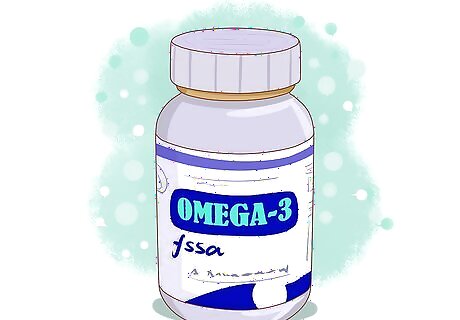
Omega-3 fatty acids keep your dog's coat and skin in top shape. If your dog's skin is irritated, or their coat isn't as healthy as it could be, they may shed more. To give their nutrition a boost, try fish oil supplements for dogs (which are high in Omega-3 fatty acids). Talk to your vet before giving your dog any supplements, and be sure to follow the directions on the label after you speak to them. Fish oil comes in liquid and chewable varieties. If you're not sure what type to choose, ask your vet for their professional recommendation.
Clip a thick coat in the summertime.
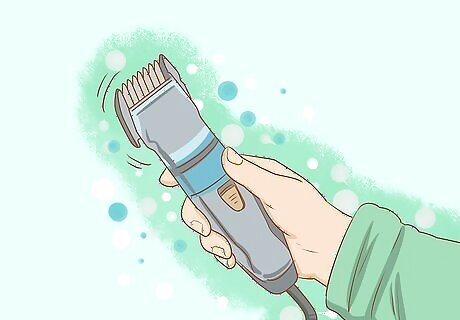
Trim the hair on your pup's legs and stomach to reduce shedding. Though dogs with short, single coats don't need a trim, a dog with a thicker, double coat can benefit from a little bit of clipping. Be sure to use professional-grade dog clippers. Only trim your dog's legs and stomach, and make sure to leave at least 1 inch (2.5 cm) of fur. This can reduce your dog's summertime shedding, and it'll also cool them off. If you're nervous about trimming your pup yourself, contact a professional groomer to do the job instead.
Give your dog more playtime and attention.
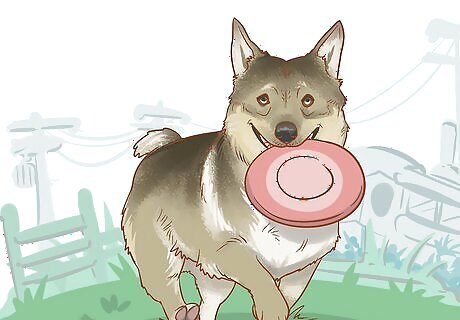
Your dog may be shedding because they're nervous or anxious. Giving your dog more affection and stimulation will reduce their anxiety and boost their mood. Both can help keep shedding under control. Your dog may be anxious if they're left alone more often. Try giving them daily playtime to reduce their stress level and stop them from shedding.
Try out an anti-shedding bodysuit.
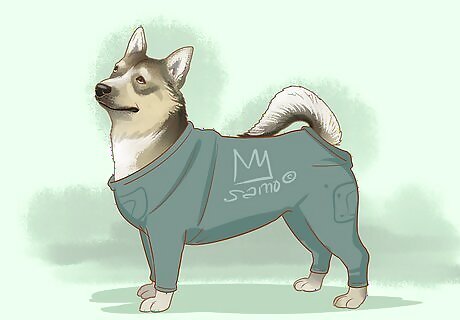
A dog bodysuit keeps loose hairs within the snugly fitting suit. Though it's not an everyday option, an anti-shedding bodysuit come in a variety of sizes and can be a good temporary fix. Make sure you get a size that doesn't fit too tight on your dog, and if your dog looks distressed or uncomfortable, take it off and try a different method. Even if your dog is comfortable in the bodysuit, save it for special occasions to minimize the dog hair around your home. Dogs aren't meant to wear clothes 100% of the time.
Take your dog to the veterinarian.
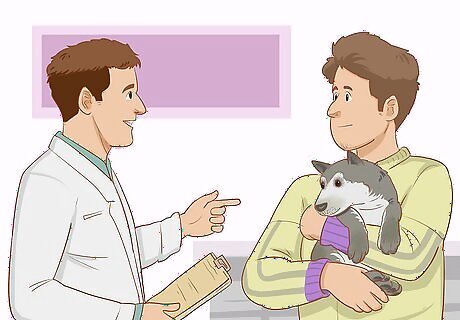
Your dog may need a vet's help if they've got irritated skin or bald spots. If your dog’s shedding is unusually excessive or accompanied by these symptoms, they may be dealing with another health issue. Parasites, fungal infections, and allergies are all common culprits that contribute to increased shedding. A vet can determine what’s going on and prescribe effective treatment. Other symptoms of an underlying health problem include brittle fur and itchy skin.




















Comments
0 comment